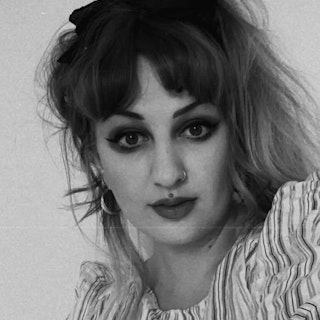Has fashion marketing become boring?
What does the trend for paparazzi-style ads for celebrity-obsessed audiences say about the ‘big idea’?
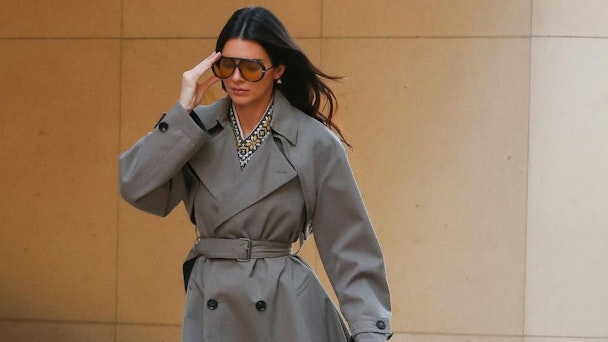
Bottega Venetta campaign / Kendall Jenner on Instagram
Fashion marketing has long been a playground for the avant-garde, but increasingly, a sense of monotony has settled in, leaving creativity to take a backseat to the comfort of the familiar. Luxury brand campaigns are now more likely to look like paparazzi shots straight from the pages of a gossip site or glossy magazine, such as Bottega Veneta and Gucci's TMZ-style images featuring famous faces A$AP Rocky, Kendall Jenner and Bad Bunny going about their day-to-day lives.
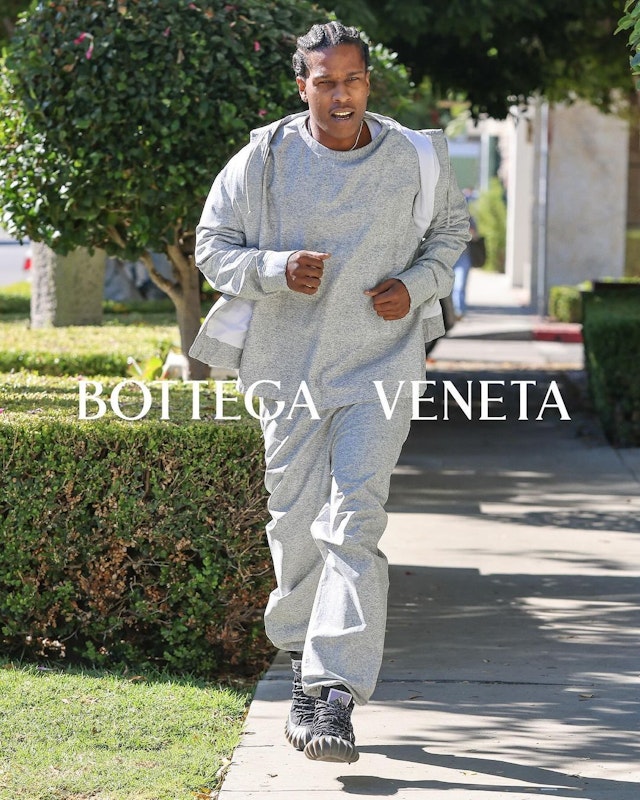
Of course, high-profile people in campaigns is hardly new, but does this intersection of celebrity and the commonplace diminish the imagination of luxury fashion? Or is it a stroke of genius to resonate with younger audiences?
“Paparazzi fashion campaigns are not new. They have been used by fashion labels for some time to capture the attention of a celebrity-obsessed culture. Fashion communication is made of trends too,” says Johanna Worth, global head of luxury at Amplify.
“If celebrity endorsement were not efficient, brands would not invest in it. However, the audience’s interest in the campaign will depend on the authenticity of the execution and choice of endorsement. The talent must be wisely chosen and resonate with the audience. The first question to ask is: who is the campaign speaking to?”
Explore frequently asked questions
Over the weekend, John Galliano’s grandiose show for Maison Margiela closed Paris couture week to the highest of praises. The lavish spectacle was a ‘had-to-be-there’ moment and a poignant reminder that exciting fashion transcends the norm, banishes the bleak and inspires observers.
The Spring/Summer 2024 show has been classed as a hark back to the designer’s 90s heyday and a time when fashion houses created cultural moments that stood the test of time; some have even said it will “go down in history.” The reaction to the show seems to confirm that people want fashion to provide a sense of escapism through its lavish storytelling.
Consumers need to dream
It’s a love-hate relationship, apparently, and depends on the environment. On social platforms, real-life situations engage viewers more and position products within situations that are real and relatable, which, in turn, can drive more emotional connection. Take Gucci’s latest tabloid-meets-high-fashion shoot that features Taiwanese actor Chang Chen and brand ambassador Ni Ni getting ‘papped’ in an airport. It’s practically a carbon copy of its Bad Bunny and Kendal Jenner images from September, but it has generated millions of likes on Instagram alone.
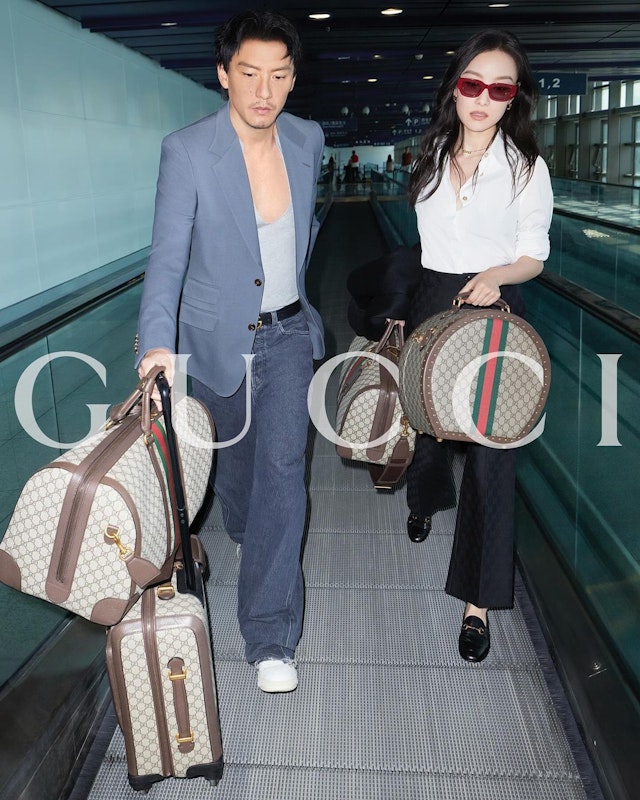
“The ‘mundane’ can act as the juxtaposition that showcases the craft and beauty of the products,” says Susan Pratchett, president at Spring Studios London, which includes Louis Vuitton and Marni among its clients. “But, in general, luxury needs to allow consumers to dream,” she adds. “The paparazzi-style campaigns tap into a vein of brand self-awareness and playfulness – in particular, Bottega, which lifted the shots directly from paparazzi sites, in turn fuelling a bigger conversation. Equally, the brands have the benefit of leveraging PR opportunities, as well as building reach and advocacy through the talent’s social network. These network effects drive a higher ROI, which again further supports the approach.”
Is the ‘big idea’ missing?
After the excitement around Calvin Klein’s latest campaign starring actor Jeremy Allen White, some people questioned if the ‘big idea’ was missing, while others wondered if it even mattered at all. “Brands are playing it very safe 99% of the time and even the ones that are pushing boundaries, like Calvin Klein – it’s stuff they’ve done before,” explains fashion photographer Rankin. “If anything, this is a return to form for Calvin Klein because it had gone even safer for the last few years. It is not stretching itself beyond sex sells.”
With so few fashion brands pushing themselves, it can feel frustrating to creatives working in the sector. Rankin says he is seeing so many campaigns and designs that are so “homogenous it’s a bit embarrassing” and that a lot of what we’re being shown is just repurposed culture. “Stand out in culture, be part of culture, as opposed to just sort of representing it,” is his advice instead. There’s an argument that using celebrity for fame value alone no longer cuts through when there is a broader cross-culture talent pool to pick from and the casting of this talent, when well-considered, can make an impactful statement and encourage organic social sharing. Highsnobiety’s vice-president of brand partnerships, Stefanos Constantinou, says that many brands are scared to be bold and innovative nowadays, primarily because of the aftermath of cancel culture: “The intentions are there. And all creative conversations start with that ambition; however, the more you work on a project, the more you deal with corporate realities, sales and a boardroom that you have to convince that whatever you do won’t hurt your sales.“
The brands that are killing it
Time and time again, the surprise element in fashion marketing reigns supreme and this couldn’t have been truer for Loewe’s campaign that starred iconic Scottish actor Maggie Smith, or even Diana Ross and Michael Stipe for Saint Laurent. Loewe is a brand that is consistently held in high regard when it comes to innovation, with many in the fashion game affirming that it works because the team there doubles down on contemporary culture, as opposed to what’s happening in fashion. The designs themselves might not be revolutionary, as Rankin puts it, but they are interesting.
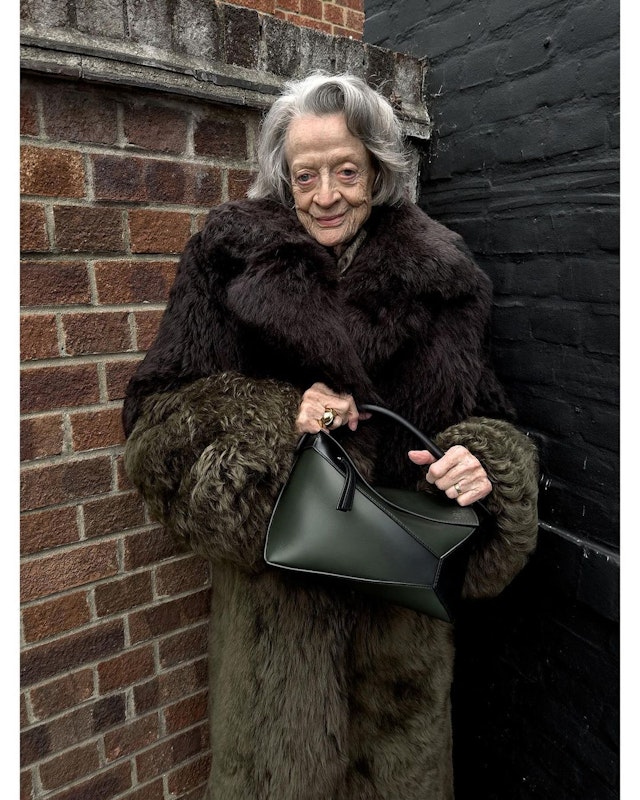
Another fashion house on everyone’s minds this year is Jacquemus. The French label, which was founded in 2009 by Simon Porte Jacquemus, has created a new luxury fashion playbook for the next generation. With activations that center around both the digital and physical, the brand is bold, irreverent and pioneering. From its ‘bag on wheels’ CGI stunts on social that went viral last year to its immersive and Instagrammable retail concepts, such as pink vending machines in Paris and giant bag-shaped pop-up cafes in Seoul, it is generating huge amounts of earned and shared media, reach and brand equity – all while avoiding traditional advertising models. Worth says Jacquemus has “managed to create a world around him celebrating his Provençal roots, his team and family in a very authentic, mood-lifting, colorful and inclusive way.”
Do AI and luxury go hand-in-hand?
Digital tech and luxury have never been so intertwined, which will only accelerate this year. You just have to look at all the copycat campaigns after the Jacquemus CGI bags. Luxury brands are striving to enhance experiences tailored to meet the demands of their most discerning consumers, as well as engage with the new generations. Worth claims that AI will help “push the boundaries of creative storytelling in further imaginative ways,” as well as offer bespoke experiences to shoppers.” She continues: “It will also help to monitor customer shopping behavior, forecast trends and practice dynamic pricing, helping brands make better strategic decisions.”
It’s not something that Rankin completely agrees with; he doesn’t believe that AI and fashion bode well for customers in certain sectors. He credits fellow photographer Jurgen Teller, who shot Maggie Smith in the Loewe campaign, as someone successful because he blurs the lines between reality and experiential – people are drawn to the German visionary’s grit, raw emotion and humor, and that takes a human touch. But, he does believe that mixing AI and luxury in innovative ways is exciting; we just aren’t seeing that come through just yet in marketing.
“People are just playing it safe. That’s why Loewe stands out for me because it tries to be a cultural moment, as opposed to just selling clothes.”
Interested in seeing creative campaigns? Check out our Ad of the Day and the Best Ads of the Week sections.

